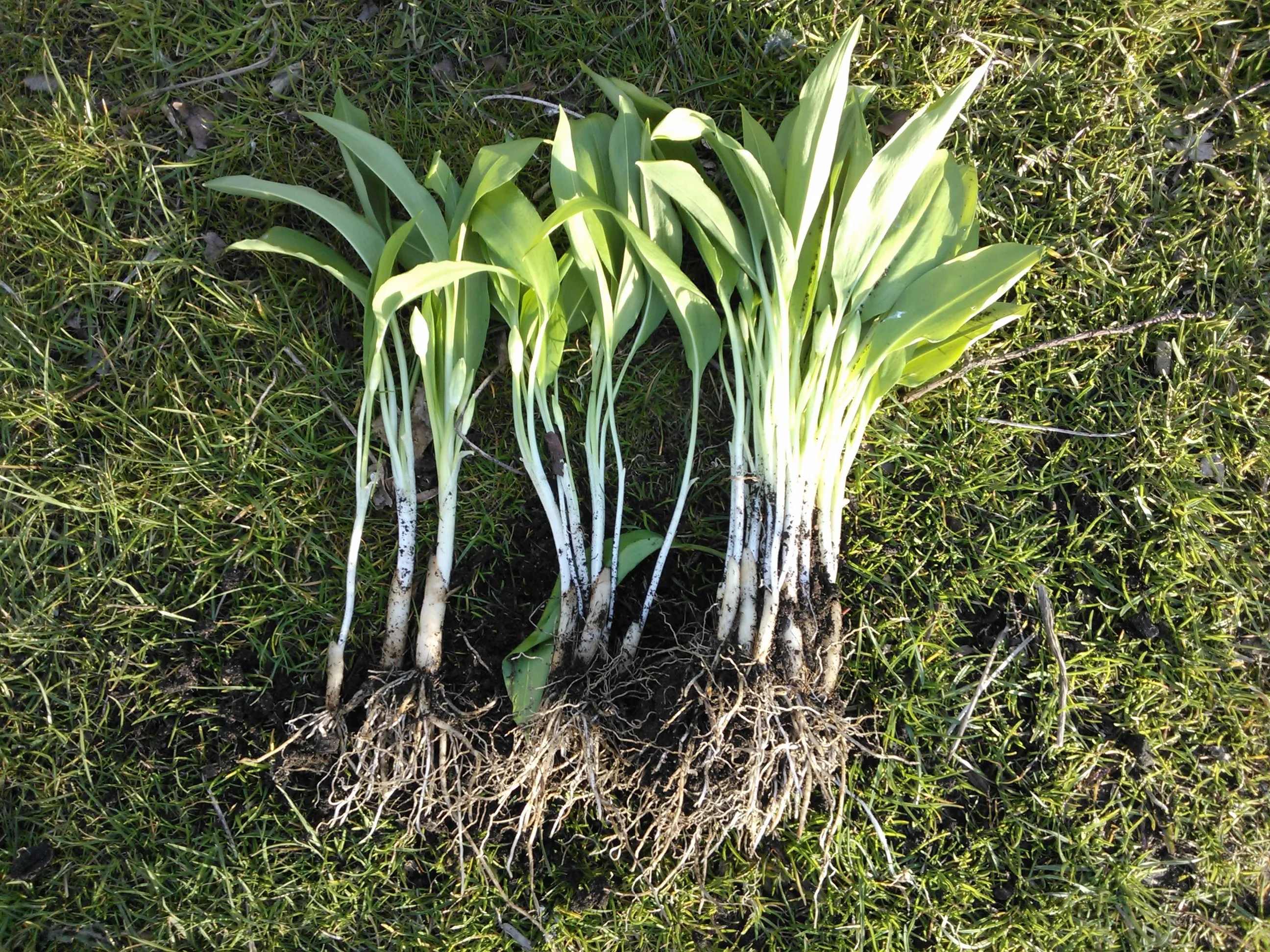
Discovering the Best Uses of Garlic Wild in Your Culinary Adventures
Share
Discovering Garlic Wild: A Guide to Foraging and Cooking with Flavour

Introduction to Wild Garlic
Wild garlic, also known as bear’s garlic, bear leek, broad leaved garlic, or allium ursinum, is a plant species with a mild garlic flavour that can be eaten raw or cooked.
It is a type of wild leek that grows in shady woods and is a popular ingredient in many recipes, including salads, soups, and pasta dishes. Similar to chives, wild garlic can be used to enhance a variety of dishes with its mild garlic flavor.
Wild garlic season typically runs from spring to early summer, and the plant can be identified by its bright green leaves and white flowers. Eating wild garlic not only adds flavor to your meals but also provides numerous health benefits.
Foraging wild garlic is a great way to connect with nature and add some excitement to your cooking, with the added benefit of being a free and sustainable ingredient.
Wild garlic bulbs can be harvested, but it’s essential to follow best practices to avoid damaging the plant and its habitat.
Distribution and Habitat
Wild garlic is native to Europe and Asia, but can also be found in the Pacific Northwest region of North America, where it grows in damp, wooded areas. However, it is less commonly found in the far north regions of Scotland, Orkney, and Shetland.
The plant thrives in shady woods with rich soil, and can be found in the same habitats as other plant species like bluebells and wild boar. Wild garlic is a hardy plant that can grow in a variety of conditions, but it prefers areas with moist soil and partial shade. The plant’s botanical name, allium ursinum, reflects its association with brown bears, which are known to feed on the bulbs.
Wild garlic can be found in small patches or large areas, and can be identified by its distinctive smell and taste.
Identifying Edible Plants
When foraging for wild garlic, it’s essential to be able to identify the plant correctly to avoid mistaking it for poisonous lookalikes like lily of the valley.
Wild garlic leaves are bright green, long, and narrow, with a distinctive garlic smell when crushed.
The plant’s white flowers are small and grow in clusters, and can be used as a garnish or added to salads.
The stem of wild garlic is also an important identifying feature, growing from a single bulbous base.
Wild garlic can be confused with other plant species, like allium vineale, but can be distinguished by its broader leaves and milder flavor.
It’s crucial to be aware of the potential risks of foraging, including the risk of poisoning or allergic reactions.
Foraging Best Practices
When foraging for wild garlic, it’s essential to follow best practices to avoid damaging the plant and its habitat.
Only harvest what you need, and avoid pulling up the entire plant, as this can damage the roots and prevent regrowth. When harvesting, consider taking only a single bulb to minimize impact on the plant population.
Foraging in areas with rich soil and plenty of moisture can help ensure a sustainable harvest.
Be mindful of local regulations and respect private property when foraging for wild garlic.
It’s also important to be aware of the potential impact of foraging on the environment and to take steps to minimize your footprint.
Responsible Foraging Practices
When foraging for wild garlic, it’s essential to practice responsible and sustainable methods to ensure the long-term health of the plant species and the environment. This includes only picking what you need, avoiding over-harvesting, and not damaging the surrounding ecosystem. It’s also crucial to correctly identify wild garlic (Allium ursinum) to avoid confusing it with poisonous plants like lily of the valley. Foraging wild garlic in shady woods, where it commonly grows, requires attention to the plant’s bright green leaves and white flowers. Brown bears are known to fondly eat wild garlic bulbs, but human foragers must be more mindful of their impact. By adopting responsible foraging practices, we can enjoy the mild garlic flavour of wild garlic while preserving its place in the wild.
Harvesting Wild Garlic Bulbs
Wild garlic, also known as bear's garlic and bear's leek, bulbs can be harvested in the spring, when the plant is in its dormant phase.
Use a fork to gently loosen the soil around the bulb, and then lift it out of the ground.
Only harvest bulbs that are large enough to use, and avoid damaging the roots or leaves.
Wild garlic bulbs can be used in a variety of dishes, including soups, stews, and salads. Broad leaved garlic can be used similarly to leeks in many recipes.
The bulbs can also be roasted or sautéed as a side dish, and can be used as a substitute for garlic cloves in many recipes. Wild garlic can also be used as a substitute for onion in various dishes.
Field Garlic and Other Varieties
Field garlic (Allium vineale) is another variety of wild garlic that can be found in fields and meadows, as opposed to the woodland habitats of Allium ursinum. While both share similarities in taste and aroma, field garlic tends to have a stronger flavor. Other varieties, such as wild leek (Allium ampeloprasum), also exist and can be used in similar ways to wild garlic. Understanding the different types of wild garlic and their habitats can enhance your foraging experience and provide a wider range of recipe ideas. Whether you’re looking for bear garlic (Allium ursinum) or other species, recognizing the botanical name and characteristics of each plant is key to successful foraging.
Cooking with Field Garlic
Field garlic, also known as wild garlic, can be used in a variety of dishes, from salads and soups to pasta and sauces. You can mix wild garlic with other fresh herbs to enhance the flavour of your dishes. The plant’s mild garlic flavor makes it a great addition to many recipes, and can be used as a substitute for garlic cloves. Wild garlic can be eaten raw or cooked, and can be added to dishes at the end of cooking to preserve its flavour and texture, often complemented by a dash of pepper. It can also be used to make a flavourful sauce for pasta and other dishes.
The plant’s leaves and flowers can be used as a garnish or added to salads, and can be used to make a delicious and healthy pesto. For a delicious and easy recipe, try making wild garlic butter by mixing chopped wild garlic leaves with softened butter, perfect for spreading on bread or using in cooking. The leaves are very tasty when used fresh in salads or cooked into various dishes. Wild garlic can also be used to make a variety of other dishes, including scrambled eggs, mashed potatoes, and cheese sauces.
Recipe Ideas and Inspiration
Wild garlic is a versatile ingredient that can be used in a variety of dishes, from scrambled eggs and salads to soups and pasta. Its mild garlic flavour makes it an excellent addition to mashed potatoes, and it can even be used as a substitute for garlic cloves in many recipes.
For a delicious and easy recipe, try making wild garlic butter by mixing chopped wild garlic leaves with softened butter, perfect for spreading on bread or using in cooking. Wild garlic can also be eaten raw, added to salads for a fresh twist, or cooked into soups for a hearty meal. The possibilities are endless, and experimenting with different recipes can help you find your favorite ways to use this fantastic ingredient. Remember, when cooking with wild garlic, it’s best to add it towards the end to preserve its flavor and aroma, much like when using garlic bulbs in traditional dishes.
Preserving Foraged Ingredients
Wild garlic can be preserved in a variety of ways, including freezing, pickling, and dehydrating. The stems can also be preserved by salting and used in salads.
Freeze the leaves and flowers to use in soups and stews, or pickle the bulbs to use as a condiment. Dehydrating the plant can help preserve its flavour and texture, and can be used to make a variety of dishes, including soups and sauces. Wild garlic can also be preserved in oil or vinegar, and can be used to make a variety of dishes, including salad dressings and marinades.
The plant’s seeds can also be saved and used to grow new plants, and can be used to make a variety of dishes, including salads and soups.
Health Benefits of Foraged Foods
Foraged foods like wild garlic can provide a range of health benefits, including high levels of vitamins and minerals. Wild garlic can be used similarly to other fresh herbs like coriander and parsley. The plant’s mild garlic flavour can also help to boost the immune system and reduce inflammation. Wild garlic has been used in traditional medicine for centuries, and can be used to treat a variety of ailments, including colds and flu. The plant’s antibacterial and antiviral properties make it a great addition to many recipes, and can be used to make a variety of dishes, including soups and sauces. Foraged foods can also provide a sense of connection to nature and can be a fun and exciting way to add some variety to your diet. Embracing the wild garlic season not only enhances your culinary repertoire but also offers the opportunity to explore the great outdoors. Foraging for wild garlic, with its bright green leaves and white flowers, allows you to discover hidden patches in shady woods and damp areas. This adventure can lead to creating delicious dishes, from scrambled eggs to mashed potatoes, infused with the mild garlic flavour of wild garlic leaves and bulbs. Additionally, the health benefits of wild garlic, such as boosting the immune system and reducing inflammation, make it a valuable addition to any meal. Whether you’re cooking with wild garlic bulbs in soups or using wild garlic flowers as a garnish, the possibilities are endless. Tomatoes pair well with wild garlic in various dishes, adding a fresh and vibrant flavor. So, get outside, forage responsibly, and enjoy the rich flavours and health benefits that wild garlic and other foraged foods bring to your table.
Further Reading
Wild garlic (Allium ursinum) is a wonderful ingredient to forage for and cook with, offering a unique and delicious mild garlic flavour. By understanding how to identify it, where to find it, and how to use it responsibly, you can enjoy the benefits of this wild plant. Whether you’re interested in its use in salads, as a herb in soups, or as a key ingredient in sauces, wild garlic is sure to inspire your culinary creations. For further reading and more detailed information on foraging, cooking, and the botanical aspects of wild garlic, consider consulting resources like “Hedgerow” by John Wright or exploring online forums and recipes dedicated to wild garlic and foraging. With its rich history, versatile uses, and the joy of foraging, wild garlic is a plant species that can enrich your connection with nature and your culinary adventures.
